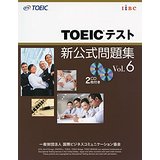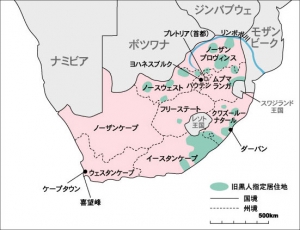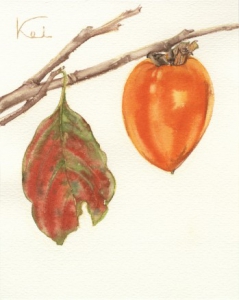10月29日(木)7-8(3:15-4:45)
5回目、三分の一が終わり、もうすぐ11月やねえ。
<今日は>
①発表:英文の続き(浦川くん)、②映像
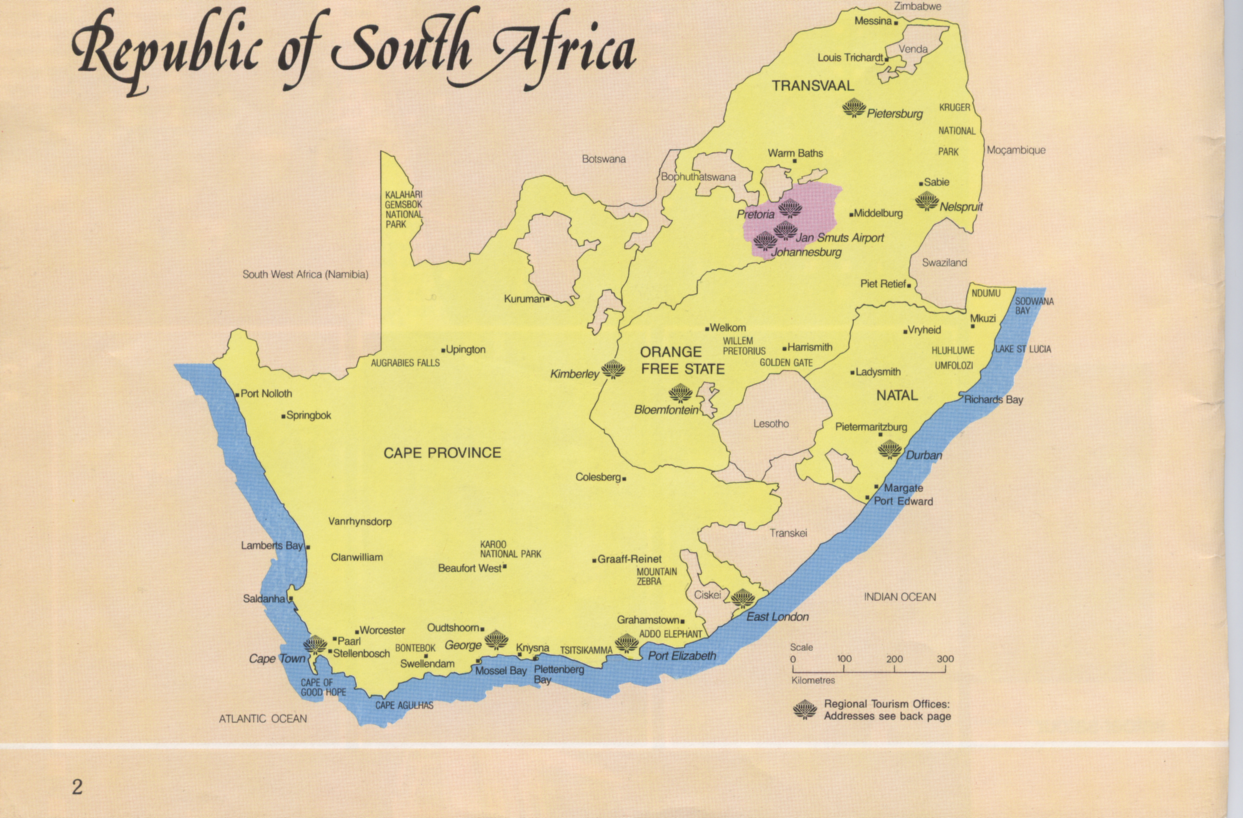
①浦川くんはきちんと理解して、日本語の表現もしっかりしてたと思います。日本語訳は末尾に→日本語訳
②アフリカ人からいい土地を奪い、不毛の地をあてがってそれを最初はreserveと呼び、国際的に非難を浴びるとbantustanに呼び方を変え、更に非難が強くなると、今度はhomelandと呼び方を変えて行ったけど、すべて草も生えないような不毛の土地、先に映像を見てもらいました。国連の職員が密かに隠し撮りをしてその映像を反アパルトヘイト運動をしている人たちに配信、僕も大阪のこむらど委員会の下垣さんからビデオテープを送ってもらいました。タイトルはDimbaza(墓場)。今回観てもらったのはその一部です。
<次回は>
①(先に)「遠い夜明け」(前の続きから)
②1652年から1910年の映像の続き。
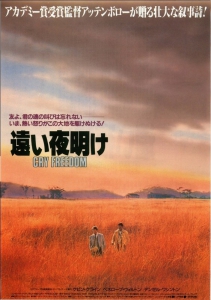
日本語訳
THE GROWTH OF MINING CAPITAL 鉱山資本の成長
The first diamonds were discovered in the area which later was to become the Kimberley diamond fields.
まず初めのダイヤモンドは、その後キンバリー・ダイヤモンドの産地になる地域で発見されました。
The diamonds on the surface were soon depleted. A more costly technique was then required to exploit diamonds under the surface. This furthered capital concentration, i.e. the concentration of ownership in fewer hands. In 1888 all diamond mines were controlled by a company called de Beers Consolidated, which before the turn of the century controlled 90% of world production. The company was in the hands of the British imperialist Cecil Rhodes, who also was Prime Minister in the Cape colony.
地表のダイヤモンドはすぐに堀り尽されました。その後、よりお金のかかる技術が地下のダイヤモンドを開発するために必要とされました。これは更に資本の集中を促しました、つまりより少数の手の中に所有権が集中したわけです。1888年には、ダイヤ鉱山が全てデ・ビアスと呼ばれる会社によって支配され、20世紀になる前には世界生産の90%をその会社が支配していました。その会社は、イギリスの帝国主義者であり、ケープ植民地の首相でもあったセシル・ローズの手中にありました。
THE CONFLICT BETWEEN THE BRITISH AND THE BOERS 英国人とボーア人の対立
The Boers had every reason to be suspicious of British capital. They viewed the railway with apprehension; it wound northwards from the Cape, and charged heavy freight fees and duties in the harbour. The Boers wanted to keep the gold-rich areas for themselves, and they looked for allies. The rivalry between the European imperialist powers in `the scramble for Africa’ gave the Boers a new chance to get rid of their dependence on the British harbours. With German and Dutch capital a railway line was built from Transvaal to the Mozambican coast.
ボーア人がイギリス資本を信用しないのには充分な理由がありました。ボーア人は、不安な思いで鉄道を見ていました。それはケープから北の方へ延び、通行料金と港での税金を課しました。ボーア人は自分のために金の埋蔵量が豊かな地域を維持したかったので、同盟国を探しました。アフリカ争奪戦でのヨーロッパの帝国主義列強間の競争は、ボーア人にイギリスの港の依存を取り除く新しい機会を与えました。ドイツとオランダの資本で鉄道がトランスヴァールからモザンピークの海岸間に建設されました。
The ruling Boers in Transvaal tried to channel income from the British-owned mines there to themselves. The tense situation between the Boers and the British led to the second Anglo-Boer War in 1899. It ended in 1902 with victory for British imperialism. Cruelties were committed on both sides, but the concentration camps set up by the British for Boer women and children left especially bitter scars.
トランスヴァールを支配するボーア人は自分たちの方に、イギリスに所有された鉱山からの収入を向けようと努力しました。ボーア人とイギリス人との間の緊張した状況は1899年の第二次アングローボーア戦争を生みました。1902年にイギリスの帝国主義者の勝利で戦争は終了しました。双方で残虐行為が行われましたが、イギリス人がボーア人女性と子供用に建設した強制収容所は、ボーア人に特に酷い傷跡を残しました。
The Boers traditionally had two enemies: the indigenous Africans, whose cattle and land they coveted and whom they tried to make into slaves, and British imperialism, which was out to exploit the riches of South Africa. But when it came to exploiting the Africans, the Boers made common cause with the economically superior British.
昔からボーア人には二つの敵がありました、欲しがっていた家畜を奪い、奴隷に仕立て上げたその土地に住んでいたアフリカ人と、躍起になって南アフリカの冨を搾り取ろうとするイギリス帝国主義でした。しかし、アフリカ人を搾取するという点では、ボーア人は経済的に優位だったイギリス人と共通の大義がありました。
THE UNION OF SOUTH AFRICA AND RESERVES 南アフリカ連邦とリザーブ
During the Boer War the British government had claimed that its objective was to protect the Africans. But in the peace treaty the whole question of the political future of the Africans in South Africa was left in the hands of the Boers and the British colonialists. In May 1910 the Union of South Africa was created, which meant that the British government handed over all political power to the whites in South Africa. It was only the negotiated product of the Boers and the British colonialists with their common cause of exploiting the Africans.
ボーア戦争の間じゅう、英国政府は戦いの目的はアフリカ人を保護することだと言っていました。しかし、平和協定を結ぶときには、南アフリカのアフリカ人のこれからの政治に関してはすべての問題をボーアじんとイギリス人植民地主義者の手に収めたままにしてしまったのです。1910年の5月に南アフリカ連合を創設しましたが、それは英国政府が政治的な権利をすべて南アフリカの白人に引き継いだということだったのです。アフリカ人を搾取するという共通の目的のためにボーア人とイギリス人植民地主義者が作り出した妥協の産物に過ぎなかったのです。
The first Union parliament created the African reserves through the Native Land Act in 1913, which made previous practices the law. Whites were forbidden to buy or rent land in the reserves, and Africans could neither buy nor rent outside the reserves. The only exception was the Cape province where, for some time, Africans were still allowed to purchase land. The law meant that 78% of the population was supposed to live in reserves comprising only 7.3% of the area of the country.
最初の連邦議会は1013年の原住民土地法でアフリカ人リザーブを創設しました。それは今までの慣習を法制化したものでした。白人にはリザーブ内の土地を買うこと、借りることが禁止されました。アフリカ人はリザーブ外では土地を買うことも借りることも出来ませんでした。唯一の例外はケープ州で、暫くの間はアフリカ人が土地を購入することが許されました。法律が意味するところは、人口の78パーセントが国土の僅か7.3%からなるリザーブに住むことになるということでした。
For a farming people to be deprived of their land was a hard and bitter blow, which at once strengthened opposition. The South African Native National Congress, which changed its name to the African National Congress (ANC) in 1925, was formed in 1912 to unite the Africans in defence of their right to land and to demand political rights. When the Land Act was still in preparation, a delegation of leading Africans was sent to London. Their mission was fruitless and the African leaders were beginning to realize that no solution to their plight could be found in London.
農民が土地を奪われれば大打撃で、すぐに反対運動が起きました。1912年、土地の権利を守り、政治的な権利を求めるために、そののち1925年にアフリカ民族会議(ANC)と改名する南アフリカ原住民民族会議が創設されて、アフリカの結束をはかりました。土地法がまだ準備段階のうちに、アフリカ人指導者の代表がロンドンに派遣されました。派遣の成果もなく、アフリカ人指導者はロンドンにでは自分たちの窮状の解決策は見出せないと悟り始めていました。
The 1913 Native Land Act was in force until 1936. That year a new law, the Native Trust and Land Act, extended the area of the reserves to 13.7%. This law was in force till all the apartheid laws were abolished in 1991. This law was the foundation of the apartheid regime’s land consolidation for the `homelands,’ the so-called Bantustans.
1913年の原住民土地法は1936年まで効力がありました。その年に新法原住民信託土地法が制定されて、リザーブの範囲が13.7パーセントにまで拡大されました。この法律はすべてのアパルトヘイト法が廃止される1991年まで有効で、アパルトヘイト政権が力を入れたホームランド、いわゆるバンツースタン政策の根幹でした。
*********
日曜日に鳥さんたちの分に何個かを残して、実を取りました。150個ほどありそうで、やっと剥けたのは33個。枝から切るときに、左手も切ってしまいました。切れる剪定鋏で枝だといっしょにぶちゅっとやって、かなり痛かったです。右足の捻挫と言い、左手の深い切り傷と言い、がたがたですねえ。だいぶ陽にあたって、もうすぐ食べられそう。
また、来週に。
クラス名簿(Zoomではある方がよさそうやから、学生支援課でもらったファイルからコピーしたよ。)
2020年後期 クラス名簿(39名)(2020年10月15日現在、登録修正期間が済んだら確定名簿をWebClassで確認出来るので、その時また更新するね。最終的には30名前後になりそうです。)
| 46190550 |
長瀬 樹潤 |
ナガセ ミキヒロ |
教育学校小中一貫中主免(社会) |
2年生 |
| 50200061 |
乾 公平 |
イヌイ コウヘイ |
農学部植物生産環境科学科 |
1年生 |
| 50200203 |
後藤 啓貴 |
ゴトウ ヒロキ |
農学部植物生産環境科学科 |
1年生 |
| 50200434 |
三浦 慶斗 |
ミウラ ケイト |
農学部植物生産環境科学科 |
1年生 |
| 51200145 |
岡田 優奈 |
オカダ ユウナ |
農学部森林緑地環境科学科 |
1年生 |
| 51200396 |
橋本 凪咲 |
ハシモト ナギサ |
農学部森林緑地環境科学科 |
1年生 |
| 53190057 |
岡本 姿月 |
オカモト シヅキ |
農学部海洋生物環境学科 |
2年生 |
| 54180550 |
村上 友斗 |
ムラカミ ユウト |
農学部畜産草地科学科 |
3年生 |
| 54180624 |
大野 篤太 |
オオノ アツタ |
農学部畜産草地科学科 |
3年生 |
| 54190157 |
小野 純平 |
オノ ジュンペイ |
農学部畜産草地科学科 |
2年生 |
| 54190207 |
川口 奏 |
カワグチ カナデ |
農学部畜産草地科学科 |
2年生 |
| 54190522 |
藤田 真由子 |
フジタ マユコ |
農学部畜産草地科学科 |
2年生 |
| 54200069 |
池田 麗 |
イケダ ウララ |
農学部畜産草地科学科 |
1年生 |
| 55190147 |
金野 琉聖 |
コンノ リュウセイ |
(農)獣医 |
2年生 |
| 55190266 |
松岡 瑞穂 |
マツオカ ミヅホ |
(農)獣医 |
2年生 |
| 61180530 |
山田 祐斗 |
ヤマダ ユウト |
工学部環境応用化学科 |
3年生 |
| 61190063 |
岩切 一真 |
イワキリ カズマ |
工学部環境応用化学科 |
2年生 |
| 61190191 |
古谷 航大 |
コタニ コウダイ |
工学部環境応用化学科 |
2年生 |
| 61200014 |
荒木 愛斗 |
アラキ マナト |
工学部環境応用化学科 |
1年生 |
| 62200185 |
川崎 大 |
カワサキ ダイ |
工学部社会環境システム工学科 |
1年生 |
| 63200094 |
浦川 大和 |
ウラカワ ヤマト |
工学部環境ロボティクス学科 |
1年生 |
| 63200216 |
黒木 雅人 |
クロキ マサト |
工学部環境ロボティクス学科 |
1年生 |
| 64180450 |
古川 陽仁 |
フルカワ ハルト |
工学部機械設計システム工学科 |
3年生 |
| 64190062 |
上山 翔大 |
ウエヤマ シヨウタ |
工学部機械設計システム工学科 |
2年生 |
| 64190190 |
木村 一平 |
キムラ イツペイ |
工学部機械設計システム工学科 |
2年生 |
| 64190242 |
小松 倫太郎 |
コマツ リンタロウ |
工学部機械設計システム工学科 |
2年生 |
| 64190277 |
嶋村 悠 |
シマムラ ユウ |
工学部機械設計システム工学科 |
2年生 |
| 64190352 |
那須 智彬 |
ナス トモアキ |
工学部機械設計システム工学科 |
2年生 |
| 64200189 |
数森 皓太 |
カズモリ コウタ |
工学部機械設計システム工学科 |
1年生 |
| 64200536 |
山川 里玖 |
ヤマカワ リク |
工学部機械設計システム工学科 |
1年生 |
| 65180230 |
酒井 将道 |
サカイ マサユキ |
工学部電子物理工学科 |
3年生 |
| 65200119 |
尾崎 天哉 |
オザキ タカヤ |
工学部電子物理工学科 |
1年生 |
| 65200229 |
小溝 睦 |
コミゾ トモ |
工学部電子物理工学科 |
1年生 |
| 65200447 |
牧ノ瀬 開人 |
マキノセ カイト |
工学部電子物理工学科 |
1年生 |
| 66180270 |
武吉 慧史朗 |
タケヨシ ケイシロウ |
工学部電気システム工学科 |
3年生 |
| 67190254 |
田尻 航晟 |
タジリ コウセイ |
工学部情報システム工学科 |
2年生 |
| 67190364 |
西尾 吉平 |
ニシオ キツペイ |
工学部情報システム工学科 |
2年生 |
| 67200047 |
諫山 あやね |
イサヤマ アヤネ |
工学部情報システム工学科 |
1年生 |
| 67200171 |
川越 彪雅 |
カワゴエ ヒヨウガ |
工学部情報システム工学科 |
1年生 |
日本語訳
THE COLONIZATION OF SOUTH AFRICA 南アフリカの植民地化
When Europeans arrived in the southern part of Africa, different peoples had been living there for some centuries. Groups of San people lived in the mountains and on the edges of the deserts in the southeast. They hunted rock rabbits, lizards, locusts and so forth. Near them lived the Khoikhoi who herded cattle and had more permanent camps than the San. They sometimes intermarried.
南部アフリカにヨーロッパ人が到着した時、そこにはすでに何世紀にも渡って様々な民族が住んでいました。サンの人々はいくつも集落を造って南東部の山や砂漠の端に住んでいました。その人たちは岩兎や蜥蜴や蝗などの狩りをして暮らしていました。サン人の近くには、家畜を飼うコイコイ人が住んでいて、狩りをして移動するサン人よりは定住型の生活を営んでいました。時にはサン人とコイコイ人は結婚することもありました。
The Europeans began to settle down in the latter half of the 17th Century on the initiative of the Dutch East India Company. The Dutch traders had out-rivalled the Portuguese and taken over the spice trade with Asia. Because the voyage to Asia was long, the Company built a depot of provisions at the Cape of Good Hope in 1652. A small white settlement was to grow vegetables and supply other services for the Company. The colony was completely dependent on the Company, among other things for the supply of arms. The Dutch colonialists called themselves Boers. It means farmers in Afrikaans, their Dutch dialect.
オランダ東インド会社に率いられて、17世紀の後半にヨーロッパ人は定住を始めました。オランダの貿易商はポルトガル人との競争に勝ち、アジアの香辛料貿易を引き継ぎました。アジアへの航海は長いものでしたので、会社は1652年に喜望峰に食料を補給するための基地を築きました。その小さな白人入植者の居留地は野菜を育て、会社のために色々なものを提供しました。居留地はすべてを会社に依存していましたが、なかでも武器の供与は全て基地任せでした。オランダの植民地主義者たちは自らをボーアと呼びました。それはオランダ語由来の言葉であるアフリカーンス語で、農民という意味です。
Disputes between the Boers and the Company made them move further inland. The first people they met were the Khoikhoi, whose pasture they conquered. Worse still for the Khoikhoi, the settlers forced them to hand over their cattle. It so was the very basis of their social system. The Khoikhoi were forced to work for the European settlers. The whites’ intrusion meant catastrophe for the San. Only a few San escaped and fled into the Kalahari desert. Their descendants live to this day under much more primitive conditions than did their forefathers in their rich soil.
会社との間で諍いを起こしてボーア人は、内陸の方に移動しました。ボーア人が最初に遭遇した人たちはコイコイ人で、その人たちの放牧地をボーア人が征服しました。コイコイ人にとって更に悪いことには、入植者達は牛を引き渡すように強要しました。それはコイコイ人の社会システムの基盤そのものでした。コイコイ人はヨーロッパ人入植者に、労働を強制されました。白人の侵入者は、サン人には悲劇的な結末を意味しました。ごく僅かのサン人は逃亡)、カラハリ砂漠に逃げこみました。その人たちの子孫は、今日でも、肥沃な土地に住んでいた祖先たちよりも原始的な状態で暮らしています。
The Xhosa and the Zulu peoples were most numerous in South Africa. Land was owned collectively, but cultivated individually. This might be called a moderate kind of socialism. When these highly developed cultures with their strong military organization clashed with the Boers, they could not be defeated as easily as the Khoikhoi and the San. The Wars of Dispossession started in 1871. The battles were many and fierce during the nine wars. The whites could only consolidate their control over what was formerly African land by crushing these African military kingdoms with superior arms. This process was almost completed in 1881. But the Boers never conquered South Africa completely. Conquest was completed only when the British forces took over the process.
南アフリカでもっとも人口の多かったのは、コサ人とズール人でした。土地は個人ではなく全体で共同所有されていましたが、個人個人が耕やしていました。一種の穏やかな社会主義と呼び得るものかも知れません。強大な軍を持つ高度に発達した文化がボーア人とぶつかった時、コイコイ人やサン人が簡単にやられたように、コサやズールーの人々がやられることはありませんでした。1871年に、略奪戦争が始まりました。9つの略奪戦争では、戦闘も数多く、激しいものでした。白人たちは優れた武器を使って、軍を持つアフリカの王国を破壊することによって、元はアフリカ人所有の土地に対する支配権を確立したのです。この過程は1881年には、ほぼ完成していました。しかし、ボーア人は完璧に南アフリカを征服しわけではありません。イギリス軍がその過程を引き継いで初めて、征服が完了したのです。
Britain feared that French control of the Cape could jeopardize British interests in India and trade with the East, and in 1795 sent a large British force to the Cape and forced the Dutch governor to capitulate. The Boers at once came into conflict with Britain. Britain was looking for raw materials and new markets for industrial goods. Slave trade and slave labour were no longer necessary. But for the Boers slavery was the foundation of their economy, so they resisted all attempts to abolish it. This contradiction resulted in bitter conflicts between them and the British colonialists. In 1833 the British managed to abolish slavery in the Cape. Many Boers, particularly the wealthy ones, left the Cape and moved inland in big ox caravans. This was called the Great Boer Trek. The Boers who stayed in the Cape needed workers for their farms, so they imported workers from Indonesia and Malaysia, Dutch colonies in Asia.
イギリスはインドおよび東洋との貿易で、ケープをフランスが支配することになればイギリスの利益が危険にさらされるかもしれないのではないかと心配しました。そして、1795年にはケープへ大規模なイギリスの軍隊を送り、オランダの植民地相に降伏することを強制しました。ボーア人は、直ちにイギリスと衝突しました。イギリスは、原料および工業製品の新しい市場を探していました。奴隷貿易と奴隷の労働は、もはや必要ありませんでした。しかしボーア人には奴隷制度が経済の基礎でしたから、ボーア人は奴隷制度を廃止する試みすべてに反抗しました。この矛盾は、ボーア人とイギリスの入植者の苦しい対立を生む結果に終わりました。1833年には、イギリス人がどうにかケープの奴隷制度を廃止しました。多くのボーア人、特に豊富なものがケープを去り、大きな雄牛の隊列を組んで内陸に移動しました。これはボーア人の大移動と呼ばれました。ケープにとどまったボーア人は、自分たちの農場のための労働者を必要としましたので、アジアのオランダ植民地インドネシアとマレーシアから労働者を輸入しました。
By 1854 South Africa was divided into four provinces. The British claimed the Cape and Natal, the coastal provinces rich in soil. The Boers had established two inland republics: the Orange Free State and Transvaal, which Britain had to recognize as autonomous.
1854年までに、南アフリカは4つの州に分割されました。イギリス人はケープおよびナタールの土壌の豊かな沿岸地方を要求しました。ボーア人は内陸の2つの共和国オレンジ自由国とトランスヴァールを設立し、イギリスはその2州を自治領として認めざるを得ませんでした。
The number of colonizers of British origin gradually grew. In Natal province sugar cultivation was started on a large scale at the end of the 19th century, and Indians were imported as indentured labour (See Appendix South Africa 1).
イギリスから来た入植者の数は徐々に増えていきました。ナタール州では、19世紀の後半に大規模な砂糖栽培が始められ、インド人が契約労働者として輸入されました。(附録<南アフリカの1>を参照)
The British and British capital became really interested in South Africa only when diamonds were found in 1867 and gold in 1886. This also caused a growing conflict with the Boers, since the rich deposits were found in their republics.
イギリス人とイギリス資本は、1867年にダイヤモンド、1886年に金が見つかったに初めて、南アフリカに本当に興味を持つようになりました。豊富な鉱物がボーア人の共和国で見つかったので、そのことでさらにボーア人との衝突が激しくなりました。
THE GROWTH OF MINING CAPITAL 鉱山資本の成長
The first diamonds were discovered in the area which later was to become the Kimberley diamond fields.
まず初めのダイヤモンドは、その後キンバリー・ダイヤモンドの産地になる地域で発見されました。
The diamonds on the surface were soon depleted. A more costly technique was then required to exploit diamonds under the surface. This furthered capital concentration, i.e. the concentration of ownership in fewer hands. In 1888 all diamond mines were controlled by a company called de Beers Consolidated, which before the turn of the century controlled 90% of world production. The company was in the hands of the British imperialist Cecil Rhodes, who also was Prime Minister in the Cape colony.
地表のダイヤモンドはすぐに堀り尽されました。その後、よりお金のかかる技術が地下のダイヤモンドを開発するために必要とされました。これは更に資本の集中を促しました、つまりより少数の手の中に所有権が集中したわけです。1888年には、ダイヤ鉱山が全てデ・ビアスと呼ばれる会社によって支配され、20世紀になる前には世界生産の90%をその会社が支配していました。その会社は、イギリスの帝国主義者であり、ケープ植民地の首相でもあったセシル・ローズの手中にありました。
THE CONFLICT BETWEEN THE BRITISH AND THE BOERS 英国人とボーア人の対立
The Boers had every reason to be suspicious of British capital. They viewed the railway with apprehension; it wound northwards from the Cape, and charged heavy freight fees and duties in the harbour. The Boers wanted to keep the gold-rich areas for themselves, and they looked for allies. The rivalry between the European imperialist powers in `the scramble for Africa’ gave the Boers a new chance to get rid of their dependence on the British harbours. With German and Dutch capital a railway line was built from Transvaal to the Mozambican coast.
ボーア人がイギリス資本を信用しないのには充分な理由がありました。ボーア人は、不安な思いで鉄道を見ていました。それはケープから北の方へ延び、通行料金と港での税金を課しました。ボーア人は自分のために金の埋蔵量が豊かな地域を維持したかったので、同盟国を探しました。アフリカ争奪戦でのヨーロッパの帝国主義列強間の競争は、ボーア人にイギリスの港の依存を取り除く新しい機会を与えました。ドイツとオランダの資本で鉄道がトランスヴァールからモザンピークの海岸間に建設されました。
The ruling Boers in Transvaal tried to channel income from the British-owned mines there to themselves. The tense situation between the Boers and the British led to the second Anglo-Boer War in 1899. It ended in 1902 with victory for British imperialism. Cruelties were committed on both sides, but the concentration camps set up by the British for Boer women and children left especially bitter scars.
トランスヴァールを支配するボーア人は自分たちの方に、イギリスに所有された鉱山からの収入を向けようと努力しました。ボーア人とイギリス人との間の緊張した状況は1899年の第二次アングローボーア戦争を生みました。1902年にイギリスの帝国主義者の勝利で戦争は終了しました。双方で残虐行為が行われましたが、イギリス人がボーア人女性と子供用に建設した強制収容所は、ボーア人に特に酷い傷跡を残しました。
The Boers traditionally had two enemies: the indigenous Africans, whose cattle and land they coveted and whom they tried to make into slaves, and British imperialism, which was out to exploit the riches of South Africa. But when it came to exploiting the Africans, the Boers made common cause with the economically superior British.
昔からボーア人には二つの敵がありました、欲しがっていた家畜を奪い、奴隷に仕立て上げたその土地に住んでいたアフリカ人と、躍起になって南アフリカの冨を搾り取ろうとするイギリス帝国主義でした。しかし、アフリカ人を搾取するという点では、ボーア人は経済的に優位だったイギリス人と共通の大義がありました。
THE UNION OF SOUTH AFRICA AND RESERVES 南アフリカ連邦とリザーブ
During the Boer War the British government had claimed that its objective was to protect the Africans. But in the peace treaty the whole question of the political future of the Africans in South Africa was left in the hands of the Boers and the British colonialists. In May 1910 the Union of South Africa was created, which meant that the British government handed over all political power to the whites in South Africa. It was only the negotiated product of the Boers and the British colonialists with their common cause of exploiting the Africans.
ボーア戦争の間じゅう、英国政府は戦いの目的はアフリカ人を保護することだと言っていました。しかし、平和協定を結ぶときには、南アフリカのアフリカ人のこれからの政治に関してはすべての問題をボーアじんとイギリス人植民地主義者の手に収めたままにしてしまったのです。1910年の5月に南アフリカ連合を創設しましたが、それは英国政府が政治的な権利をすべて南アフリカの白人に引き継いだということだったのです。アフリカ人を搾取するという共通の目的のためにボーア人とイギリス人植民地主義者が作り出した妥協の産物に過ぎなかったのです。
The first Union parliament created the African reserves through the Native Land Act in 1913, which made previous practices the law. Whites were forbidden to buy or rent land in the reserves, and Africans could neither buy nor rent outside the reserves. The only exception was the Cape province where, for some time, Africans were still allowed to purchase land. The law meant that 78% of the population was supposed to live in reserves comprising only 7.3% of the area of the country.
最初の連邦議会は1013年の原住民土地法でアフリカ人リザーブを創設しました。それは今までの慣習を法制化したものでした。白人にはリザーブ内の土地を買うこと、借りることが禁止されました。アフリカ人はリザーブ外では土地を買うことも借りることも出来ませんでした。唯一の例外はケープ州で、暫くの間はアフリカ人が土地を購入することが許されました。法律が意味するところは、人口の78パーセントが国土の僅か7.3%からなるリザーブに住むことになるということでした。
For a farming people to be deprived of their land was a hard and bitter blow, which at once strengthened opposition. The South African Native National Congress, which changed its name to the African National Congress (ANC) in 1925, was formed in 1912 to unite the Africans in defence of their right to land and to demand political rights. When the Land Act was still in preparation, a delegation of leading Africans was sent to London. Their mission was fruitless and the African leaders were beginning to realize that no solution to their plight could be found in London.
農民が土地を奪われれば大打撃で、すぐに反対運動が起きました。1912年、土地の権利を守り、政治的な権利を求めるために、そののち1925年にアフリカ民族会議(ANC)と改名する南アフリカ原住民民族会議が創設されて、アフリカの結束をはかりました。土地法がまだ準備段階のうちに、アフリカ人指導者の代表がロンドンに派遣されました。派遣の成果もなく、アフリカ人指導者はロンドンにでは自分たちの窮状の解決策は見出せないと悟り始めていました。
The 1913 Native Land Act was in force until 1936. That year a new law, the Native Trust and Land Act, extended the area of the reserves to 13.7%. This law was in force till all the apartheid laws were abolished in 1991. This law was the foundation of the apartheid regime’s land consolidation for the `homelands,’ the so-called Bantustans.
1913年の原住民土地法は1936年まで効力がありました。その年に新法原住民信託土地法が制定されて、リザーブの範囲が13.7パーセントにまで拡大されました。この法律はすべてのアパルトヘイト法が廃止される1991年まで有効で、アパルトヘイト政権が力を入れたホームランド、いわゆるバンツースタン政策の根幹でした。
*********
日曜日に鳥さんたちの分に何個かを残して、実を取りました。150個ほどありそうで、やっと剥けたのは33個。枝から切るときに、左手も切ってしまいました。切れる剪定鋏で枝だといっしょにぶちゅっとやって、かなり痛かったです。右足の捻挫と言い、左手の深い切り傷と言い、がたがたですねえ。
また、来週に。
